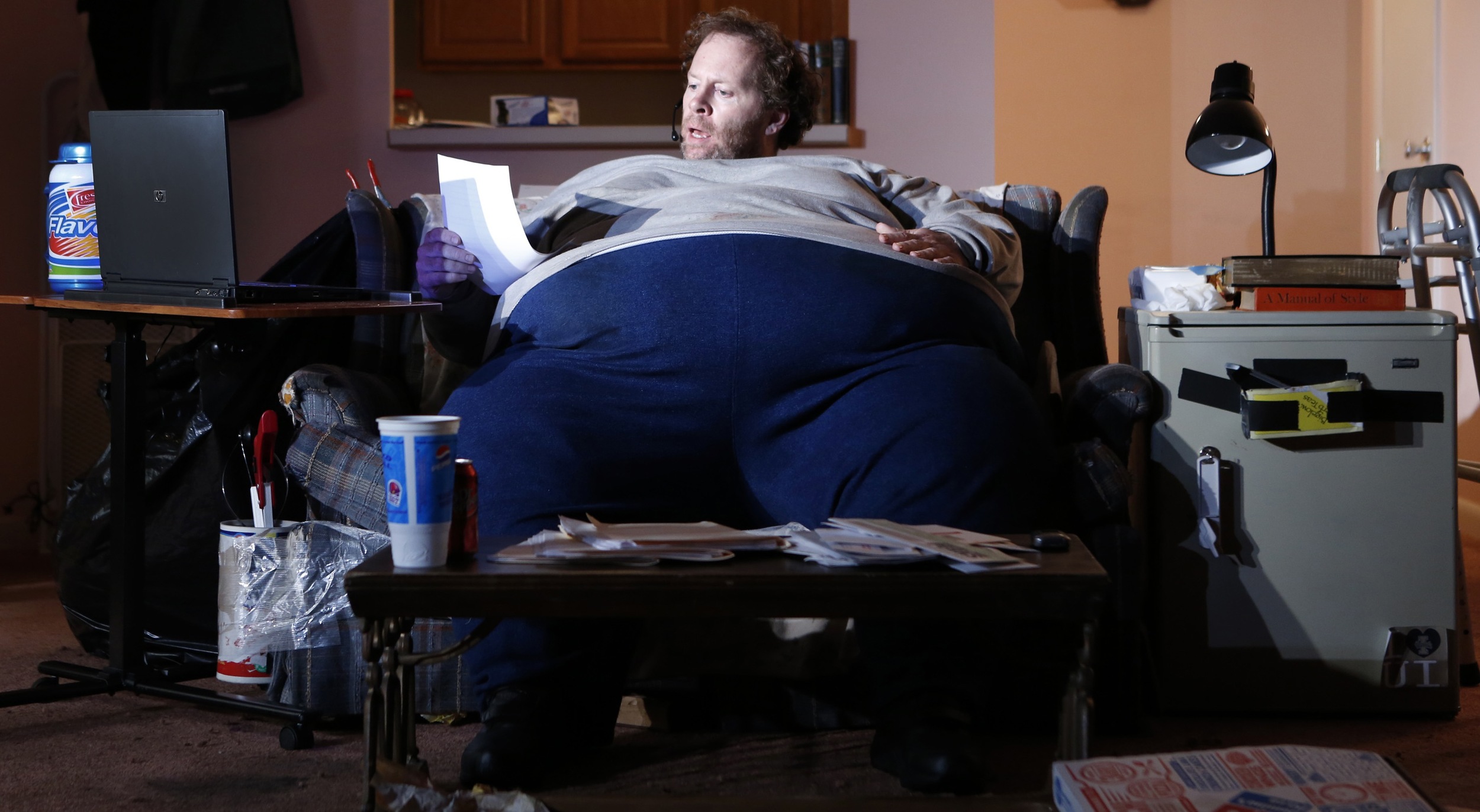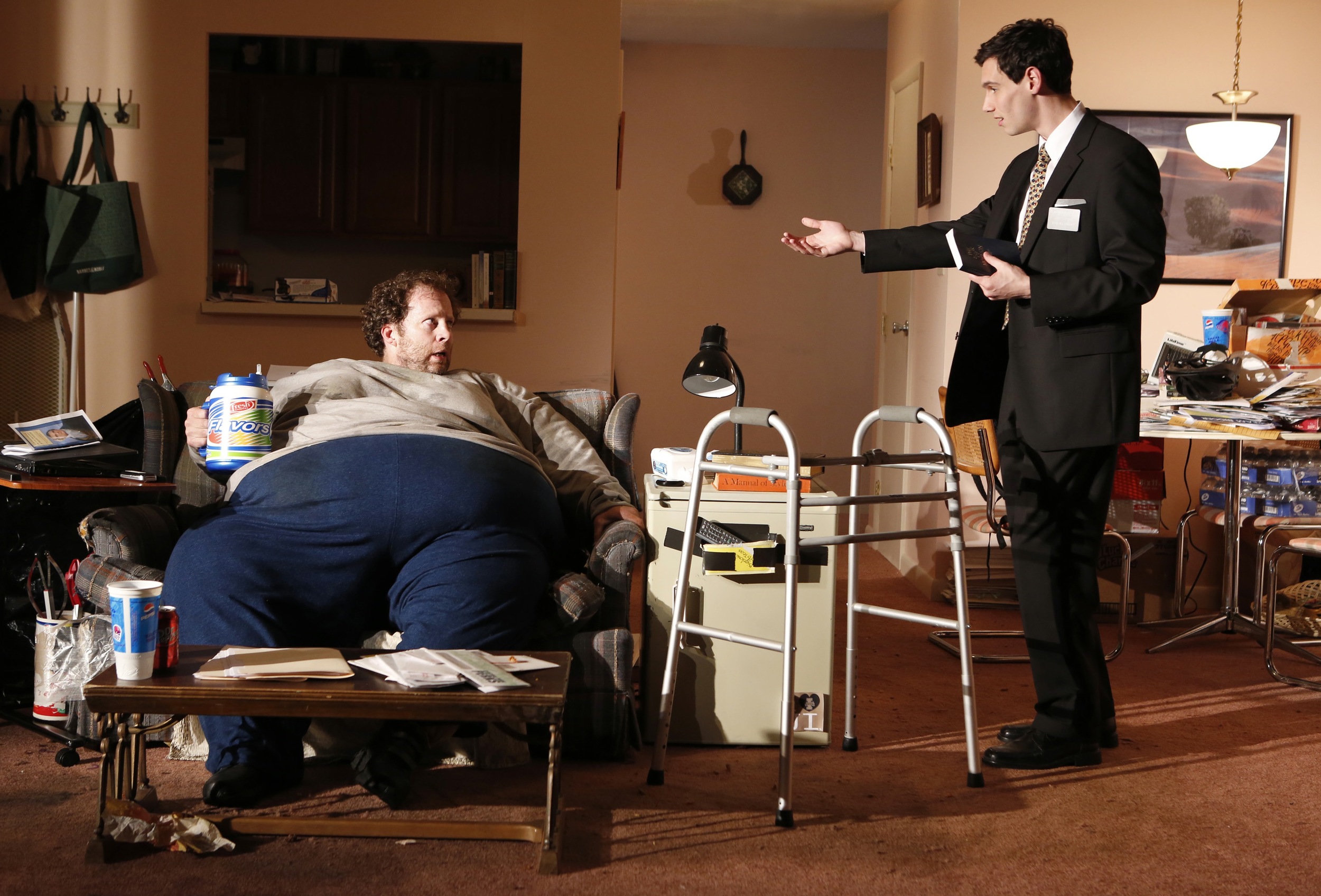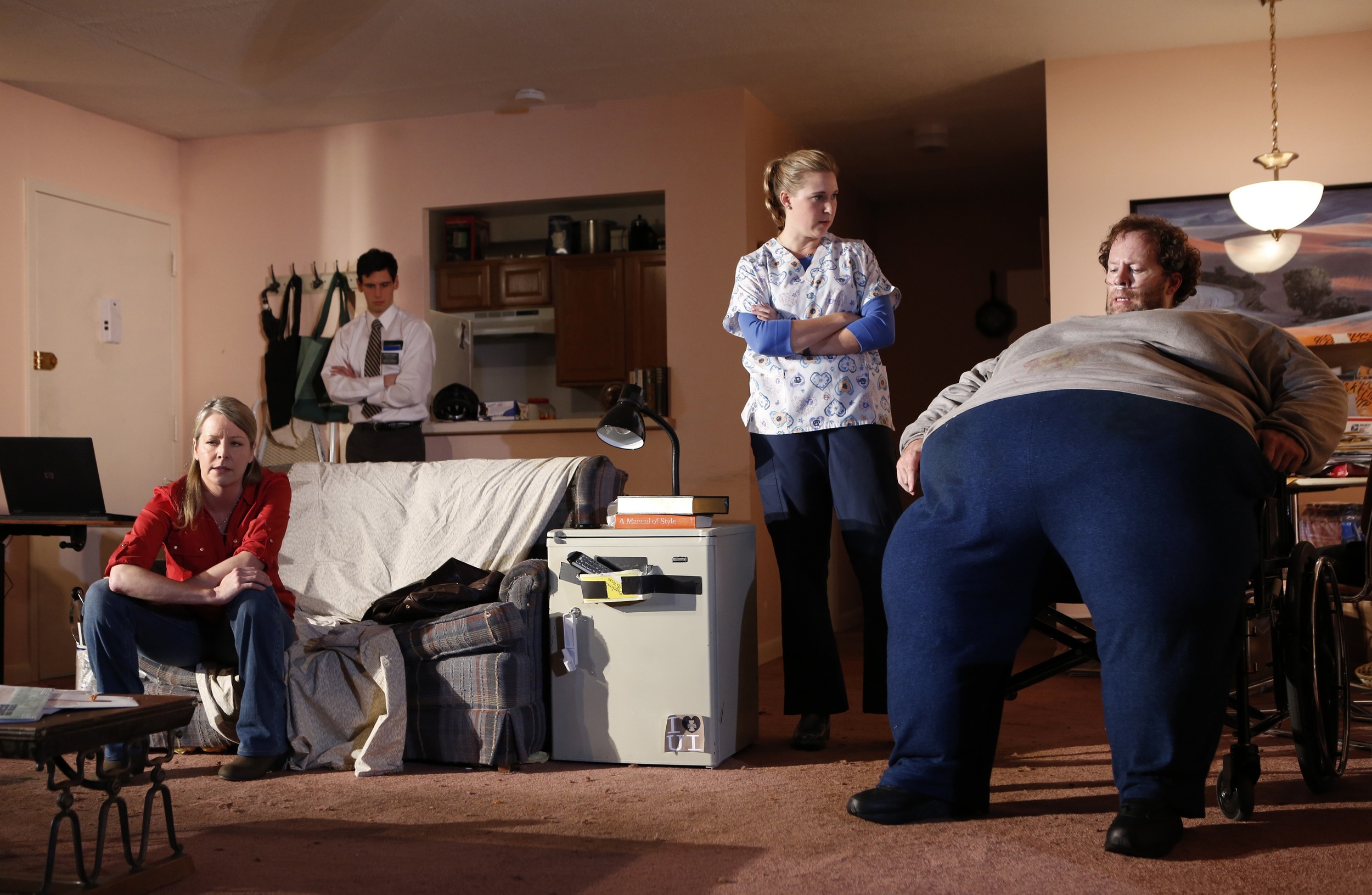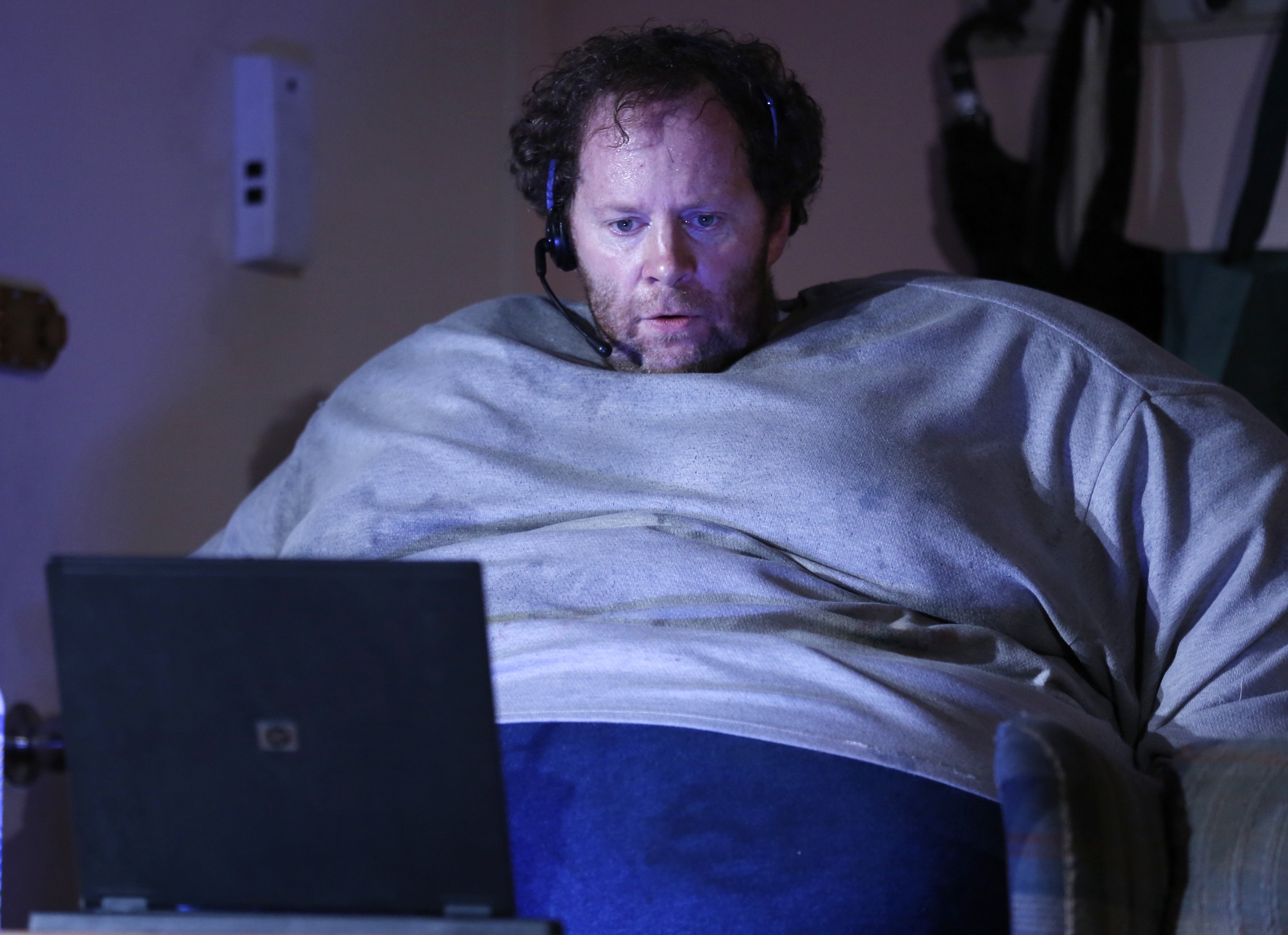




What kind of challenges did you face in designing this colossal suit?
It's the biggest thing that I've had to fabricate for the stage. The fabrication of it began in July, but we've been on this project since March. As you know, without the fat suit the play isn't quite convincing. It was a long process of trial and error, because no one had really made something so big. Something like Fat Bastard, or those celebrities that go around and are fat for a day, that's always a joke. We wanted something that would be convincing, and not evoke a comedic response but empathy and humanity.
The question was, how do we make it real on an Off Broadway budget? We had to have it ready for the actor to rehearse in it almost from day one. Because everyone else's job depended on the suit being finished, it was important that we do our job way in advance.
So how did you make it work?
It was about what worked on Shuler's body. We knew going in that we couldn't begin until we had the actor. From my research, every person who gained weight, every person who is six hundred pounds, they all carry it in different places. It was all about Shuler's anatomy. He asked us to make it heavier, so he could feel enough of the pull of gravity so it could be semi-realistic. So we had to experiment with how much foam to put on it, what kind of foam, thicker foams and thinner foams and how to make each part move independently.
It became sculptural, in a way. We had a fitting with Shuler for four hours, putting pieces of flab in various spots on Shuler's body and seeing where it felt right.
How much does the thing weigh?
It weighs about fifty pounds. It does look like more. It probably couldn't and shouldn't weigh any more because Shuler has to sit in it for so long. It's quite hot.
He sweats a lot during the play. How much of that comes from the weight of the suit, and how much is make up?
Some of it is him, and some of it we've added. The idea is that the play is five days in this man's life, and we made the choice to have him not change clothes. We figure, Charlie probably doesn't have access to very many outfits, and right now he probably doesn't care much about changing clothes. We have five different shirts that we rotate through the play that get increasingly sweaty and stained. They deteriorate as he deteriorates.
Was he excited to get into the suit?
He's been such a champion, so game for it. He was really collaborative with the process from the beginning. He would wear it all through tech, fifteen hours a day, and you can't pee in it. It takes two people to take it off him. It's kind of masochistic, but it's been helpful to him, to help him get some understanding of how it is to be Charlie. He did a lot of research as well, watching people of this size move and breathe. His performance is partly the suit, but it's also him selling it.
So you're pleased with how it turned out?
It was a labor of love. Everyone came into this excited and challenged by the prospect of having such a big piece on stage. Everyone involved was committed to maintaining the integrity of the character. That was the challenge—not poking fun, not making it too big, so that we could create a reality for this world. We did an incredible job—better than expected for such a small space. The audience is literally a couple of feet away, which means we had to really do our diligence and make every piece authentic. We're all very proud.